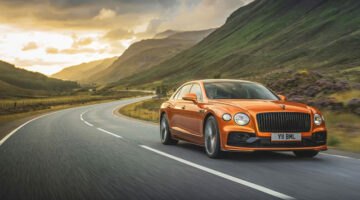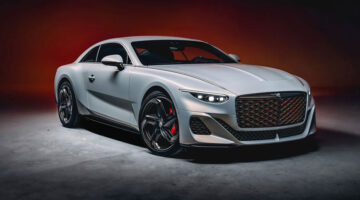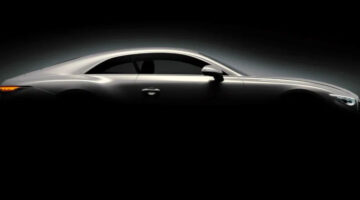One year ago this month, RAF Wing Commander Andy Green took a Bentley Mulsanne to 300kph on the famous Bonneville Salt Flats in Utah, USA. Here he explains just what’s its like to drive a luxury saloon on a wet surface, underneath a helicopter, 10kph faster than its claimed top speed.
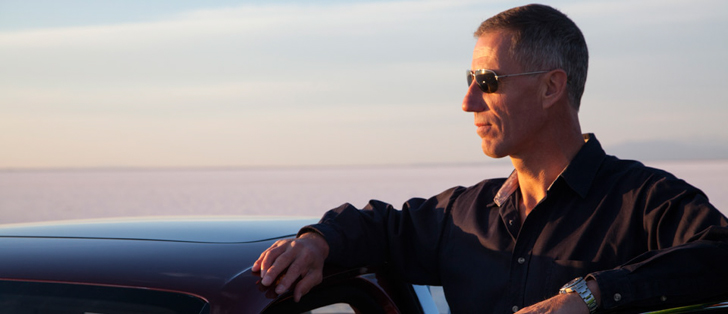
How hard can it be to drive a car in a straight-line at Bonneville? Well last year we tried just that, using a Bentley Mulsanne.
Bonneville is a salt surface, so you get a fairly poor coefficient of friction for a race track: about the same as tarmac in the rain. So the best you can hope for at Bonneville is the equivalent of high-speed driving in the rain. During the day, because the salt crust sits on top of wet clay, the heat of the sun actually brings the moisture up to the surface. So bizarrely, the surface gets wetter during the day. Get up first thing in the morning, touch the surface and you’ll get tiny little salt crystals on your hand. At the end of the afternoon, touch it and you come away with brine and wet salt on your hand. So it gets very slippery.
Plus, the Mulsanne is not the most aerodynamic of vehicles. It’s a stunning shape but has a fairly blunt-fronted shape, and that produces a lot of drag at the front. The car is also putting a lot of power down through the rear wheels, so you will finish up with the car oversteering.
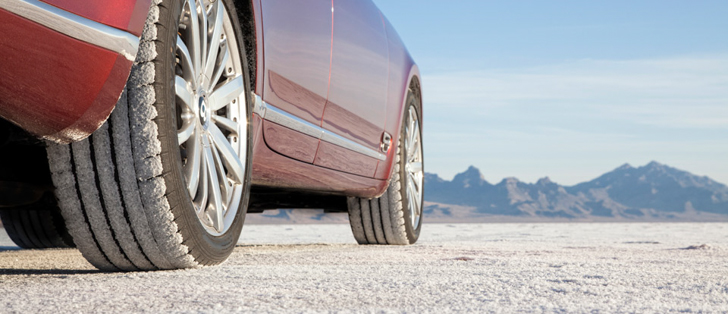
So I’m running a car with 290kph as the book figure for it and that’s on a perfect track with everything going for you at sea level. We’re 4000ft up at Bonneville, which doesn’t help because of the thinner air. That, plus the heat of the day and a slippery surface. I told the team, ‘anything north of 250kph and you should be reasonably happy with’. Everybody who goes to Bonneville drives less fast than they expect to, for the above reasons amongst others.
We got the Mulsanne up to 300kph.
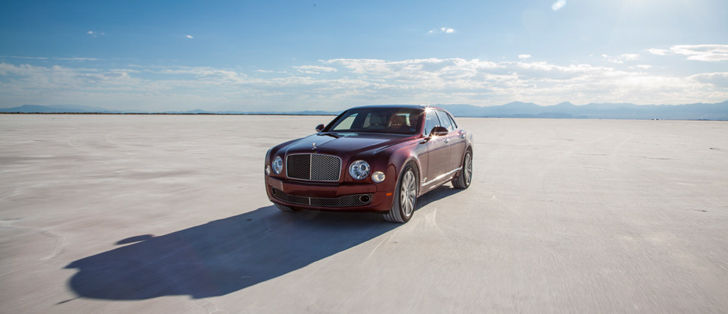
It was completely unexpected. That’s faster than it’s been on the test track. When you start hitting 250-300kph, the car should be oversteering, but it was still rock steady. The recommendation for cars at Bonneville, because of the slippery surface, is to turn the traction control off. On a slippery surface, you actually want a much higher level of slip angle than traction control normally gives you. I could not do better than the Bentley system was giving me, so I left it on.
Interestingly we did all the filming of the run in one day, from dawn all the way through to… well, pretty much until it was too dark to film again. It was a tight schedule in the two days we had available, and we started off with a silver/blue Mulsanne. It was a stunning car but was the wrong colour for the surface. Of course, it was the only car we had available though, so we did the first day’s filming in that. Then that evening the red one turned up. We all looked at it and thought, ‘that’s the one we should have had. Hell, let’s start again and get the whole thing done all again in one day’. And we did.
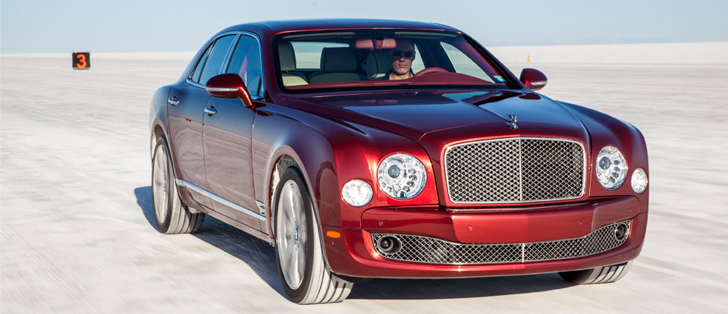
Remember that we’re using the Mulsanne to do the world’s fastest interview, with questions and answers going back and forth at 300kph. You’ll notice in the video the mirrors are all at funny angles to hide the fact that I have a car full of people with me. I’ve got the producer sitting behind me, a soundman next to him, a cameraman in the backseat and another guy with a camera in the front seat. The sound man is not only recording what I’m saying but he has microphones hanging in the exhaust and the engine bay to record the noise of the car. He had the unique problem of having to dub the engine noise on to the soundtrack rather than trying to filter it out, to make it sound like we’re moving. It was that quiet, even when we’re doing 300kph.
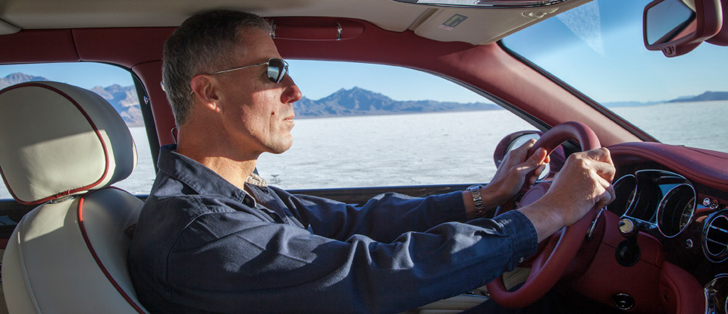
For the parts where I was doing the drive past with the helicopter, there was a very good friend of mine on location called Mike Cook. He’s been racing at Bonneville since he was a boy, so he was the track manager and independent safety analyst. His job was to make sure the track was clear and what we were doing was sensible. At one point the producer said, ‘right, I want a helicopter hovering and the car to do a 300kph pass underneath it’. Mike was, quite rightly, not happy with this. High speed cars have been blown sideways on the salt by the 100kph winds below a helicopter. I said, ‘well, I’m developing some confidence in this car, so can we do some slow speed test runs and just build the pace up gradually.’ Mike said, ‘well because it’s you, I’ll let you test it’.
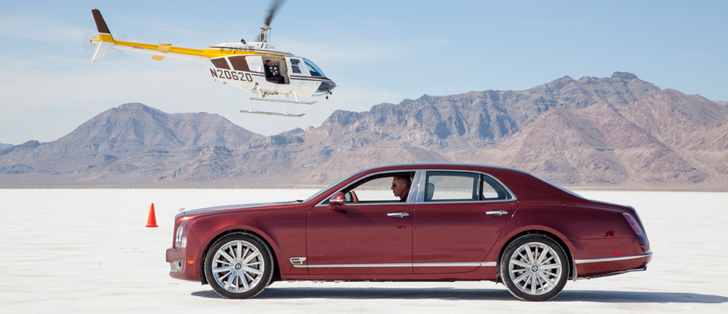
So we built the run up in stages from to 150kph to 200kph and onto 250kph, etc, straight underneath the helicopter. The Mulsanne was still rock steady. On the 300kph run, the producer decides that he’d like a slightly different shot, so as I’m approaching in the Bentley, he tells the helicopter to move off slightly to one side. All of a sudden a 100kph headwind has turned into a side wind. I am now braced…well, I can’t brace because I’m going to have to stay fairly loose on the steering wheel to react, because the car is about to be blown sideways. It always happens. As I pass underneath the helicopter, the cars twitches, I put in a little bit of steering correction, and the car tracks straight again. I’d predicting us finishing up sideways, in some kind of massive slide, but the car just dealt with it.
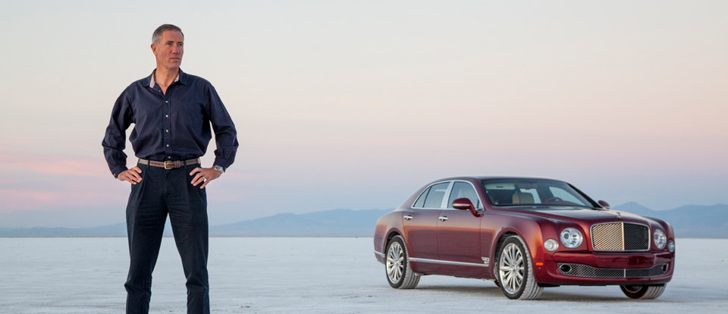
The bit that really surprised me? People spend months race-preparing cars to drive at high speed in a straight-line. It sounds easy, and it really isn’t! However, Bentley simply drove the car from the showroom, across country to Bonneville, put an extra 0.6 of a bar of air into each tyre, and said it was ready to go. I didn’t believe them. It is not that easy to set up a car to do this. So we had a long chat about tyre pressures, speeds, tyre bead temperatures, and brakes, and then we went off and did a bunch of testing. They were exactly right, the car was ready to go.
The Bentley Mulsanne – one of the world’s leading luxury performance cars – comes out of the showroom in 300kph capable condition! Astonishing!
* Wing Commander Andy Green was speaking with James Gent
– Shots courtesy of Bentley

